Introducing the world’s first four-faced watch, priced at a cool S$2.2m
It’s the 90th anniversary of Jaeger-LeCoultre’s innovative flippable timepiece, the Reverso, and the watchmaker has poured all of its know-how into this ambitious, ultra-complicated edition. Taking six years to develop, only 10 pieces exist.
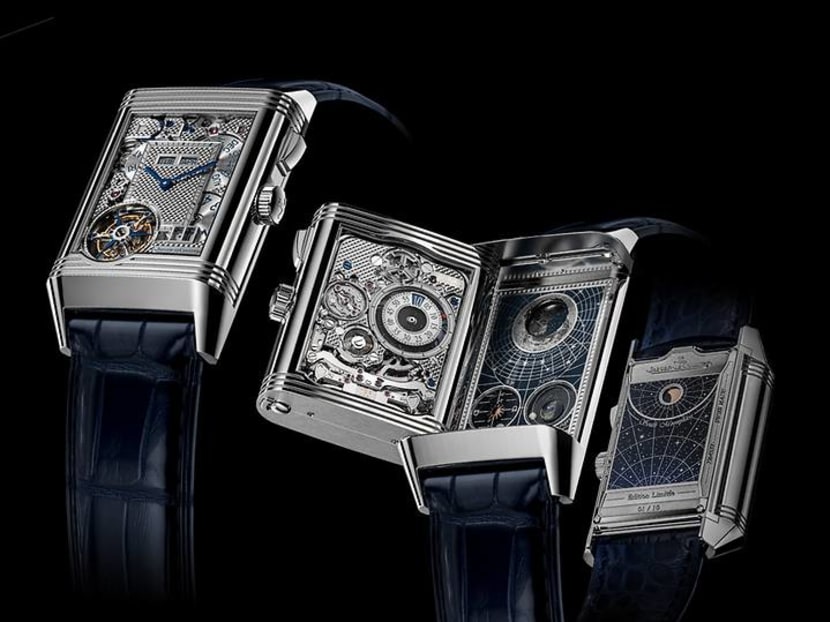
On the 90th anniversary of the Reverso, Jaeger-LeCoultre unveiled the Hybris Mechanica Calibre 185 Quadriptyque. With 11 complications, four faces and 12 patents following six years of development, this is the manufacture’s most ambitious Reverso yet. (Photo: Jaeger-LeCoultre)
Jaeger-LeCoultre’s Reverso watch is indubitably one of the most famous rectangular watches in existence, rivalled only by Cartier’s equally illustrious Tank. There are many reasons for its desirability, from its timeless Art Deco style to the multitudinous options available, but not the least of which is its ability to be reversed to reveal another face, bearing another dial, decoration or personalisation. What fun!
READ> Why are watches the most popular passion investment for Singaporeans?
The first Reverso dates back to 1931, when a request from India for a watch that could be worn during polo matches led the manufacture to come up with its swivelling solution. By flipping the case over, the dial and glass could be protected. It is ironic then that there are now Reverso models so complex and delicate that they would barely be safe from a walk down a busy street.
But the tradeoff for safety is unbridled showmanship.
At this year’s Watches & Wonders, on the 90th anniversary of the Reverso, Jaeger-LeCoultre unveiled the Hybris Mechanica Calibre 185 Quadriptyque. With 11 complications, four faces and 12 patents following six years of development, this is the manufacture’s most ambitious Reverso yet.
READ> Why are watchmakers making crazy complicated watches in a time like this?
Let’s take it one dial at a time. The first face proudly displays the time with two blued hands, a flying tourbillon at 7 o’clock, and an instantaneous perpetual calendar. The latter means all the calendar indications – the big date at 5 o’clock, the windowed day and month in the centre, and the barely-there leap year at the far right corner – jump forward instantly at midnight.
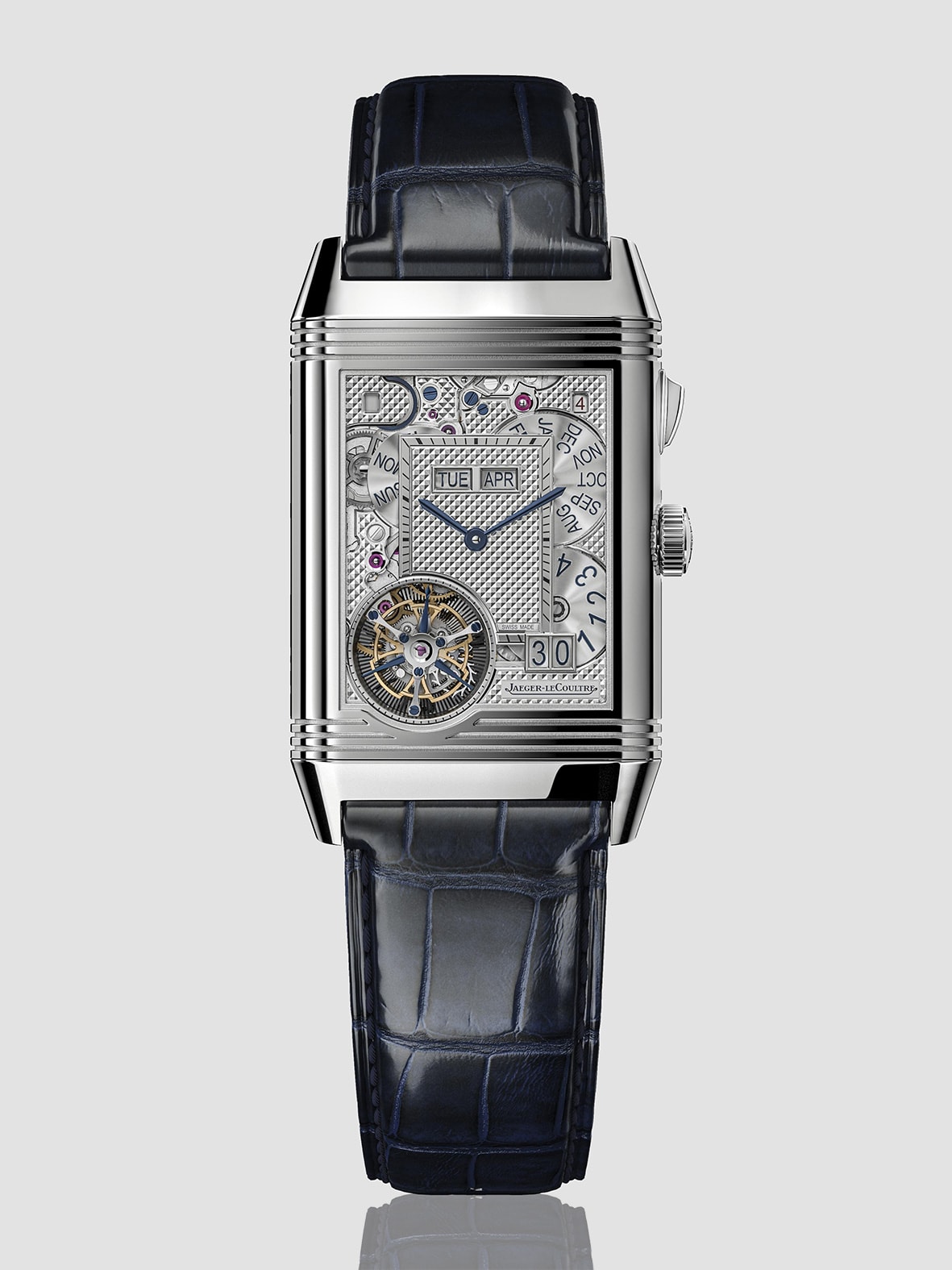
On its flip side, it displays the same time (not to be confused for a second time zone) but through a digital jumping hour aperture and white minute track instead. The minutes are indicated by a red pointer mounted on a smoked sapphire disc. At the bottom you will be able to see the minute repeater’s gongs and hammers, and its governor at 9 o’clock. The repeater, which is activated by a slider above the crown, uses a number of the brand’s innovations that ensure a louder, clearer sound and removes pauses between chimes.
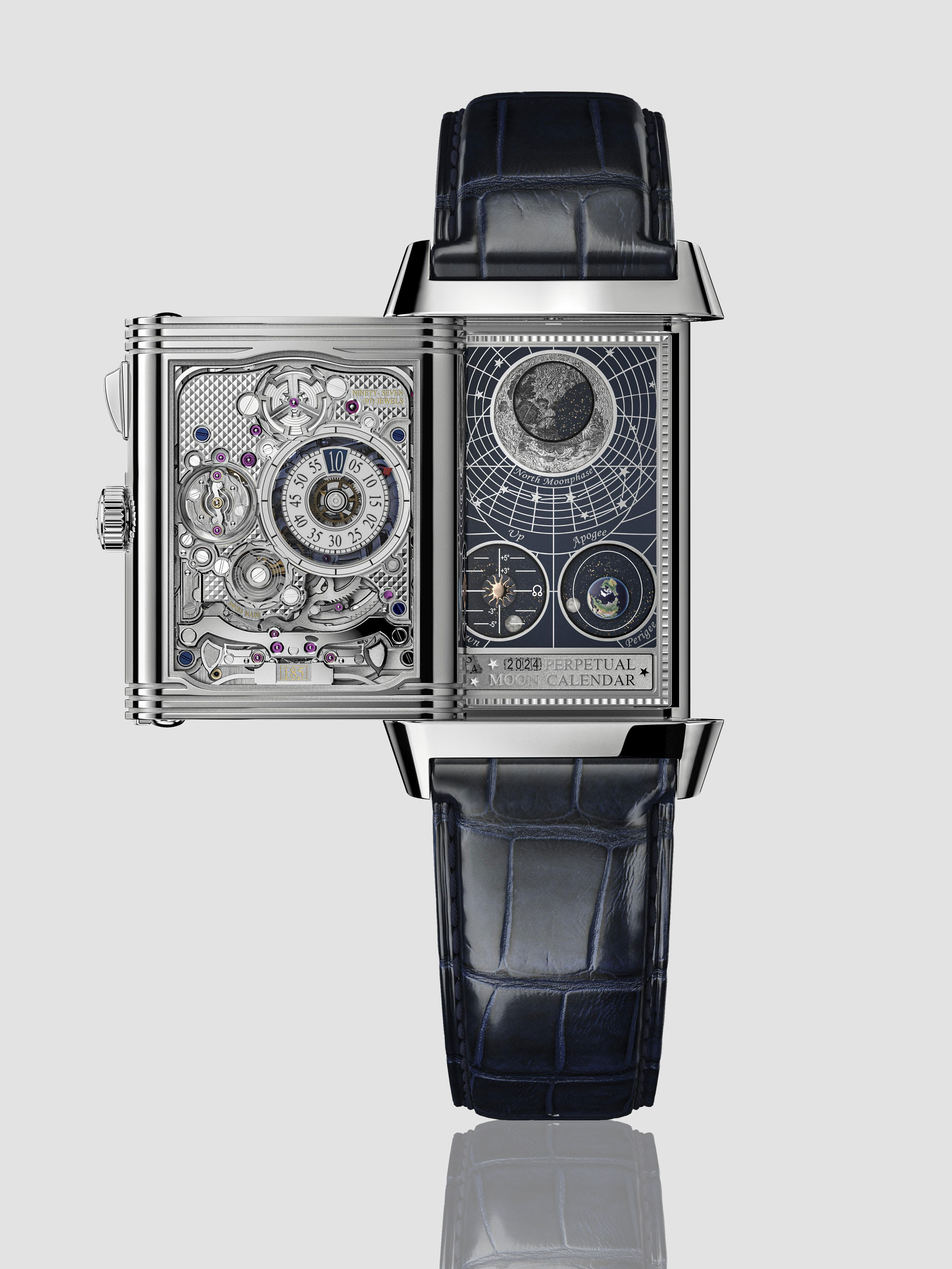
READ> Singapore watch collectors among the world's most educated: MB&F's Max Busser
The third face rests inside the watch’s cradle, and is arguably the most interesting one. There is a laser-engraved moon phase at 12 o’clock as seen from the Northern Hemisphere, and it will not need correction for 1,111 years (the high watchmaking standard is 122.5 years). On the lower left portion of the dial is an indicator for the draconic cycle, which tracks upcoming solar and lunar eclipses; and on the right is the anomalistic cycle indicator, which shows us the moon’s current distance from the earth. Including the regular moon phase, which is also known as the synodic cycle, this is the first wristwatch to display all three cycles at once.
Finally, the very back of the watch reveals another moon phase, this time as seen from the Southern Hemisphere, and below it is a star chart engraved on dark blue lacquer. As the case back reveals, this is a limited edition of only 10 pieces in white gold. Each one comes in a box that has a built-in, smart setting mechanism so the time, calendar and astronomical indications can all be easily and correctly adjusted no matter how many days have elapsed since it was last worn.
Considering the 800-part Calibre 185 takes watchmakers six months to assemble, the Quadriptyque’s €1.35 million (S$2.2 million) price tag seems painfully justified.
READ> Why are watchmakers making million-dollar timepieces that look like plastic?
A COMPLICATED ICON
The reason Jaeger-LeCoultre can achieve such mechanical proficiency (and such aspirational pricing) is because it has had a lot of practice pushing the boundaries of this tiny flippable watch. Here’s a quick look back at the Reverso’s most important, complicated pieces for an idea of how this expertise was refined for this year’s piece de resistance.
1991 TO 2000: REVERSO COMPLICATIONS SERIES
It took another 60 years from its founding for the collection to start including complications. Before that, improvements were being made to the case, making it water-resistant and easier to swivel.
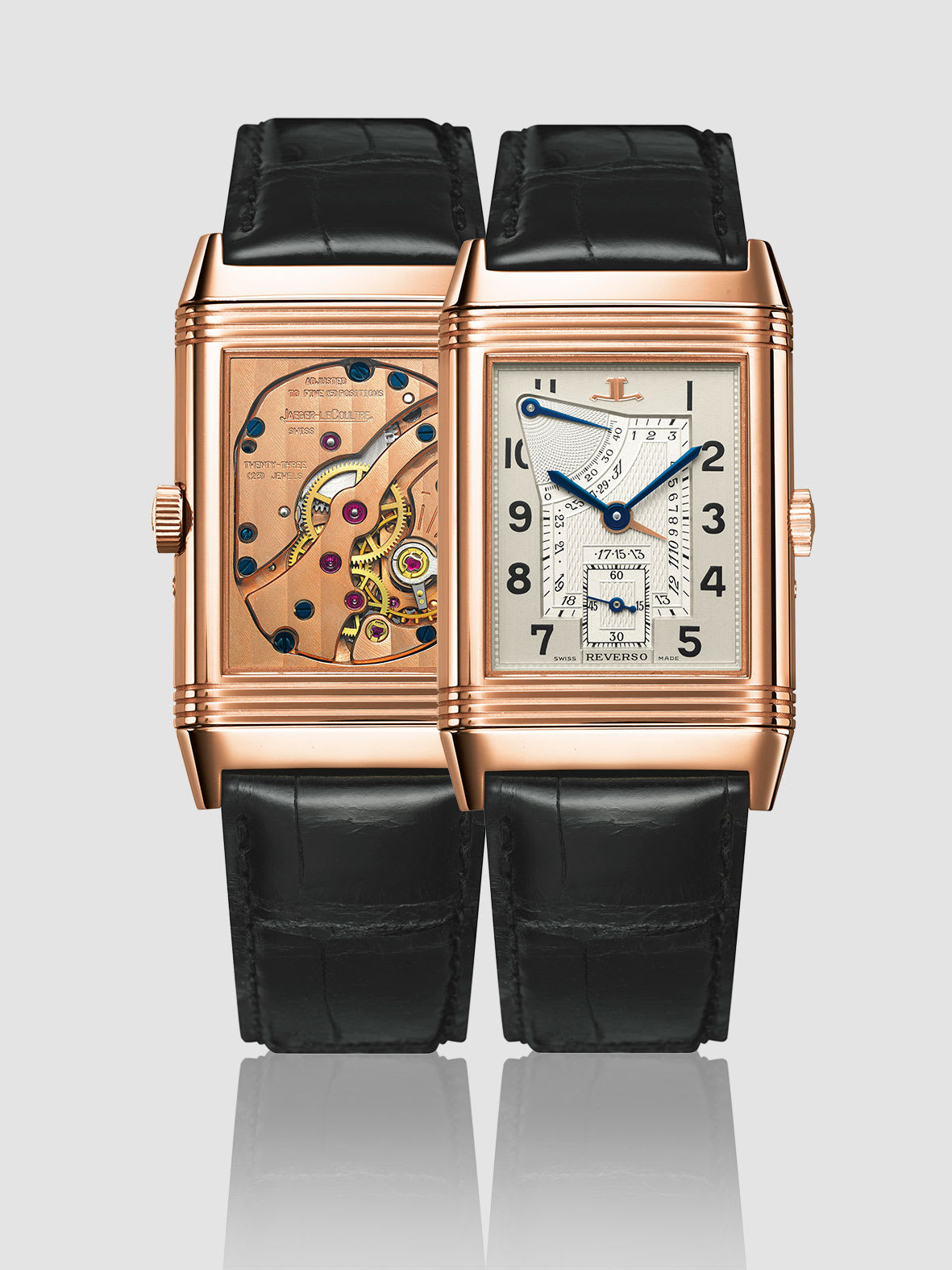
The first complicated model was the Reverso Soixantieme, a 500-piece limited edition for the collection’s 60th anniversary. It had an unusual central date hand, a power reserve indicator, and was the first to have a transparent case back.
It doesn’t sound like much, but the Soixantieme was really just the jumping off point for the entire Reverso Complications Series, where the brand’s goal was to create six complicated Reverso watches in a decade.
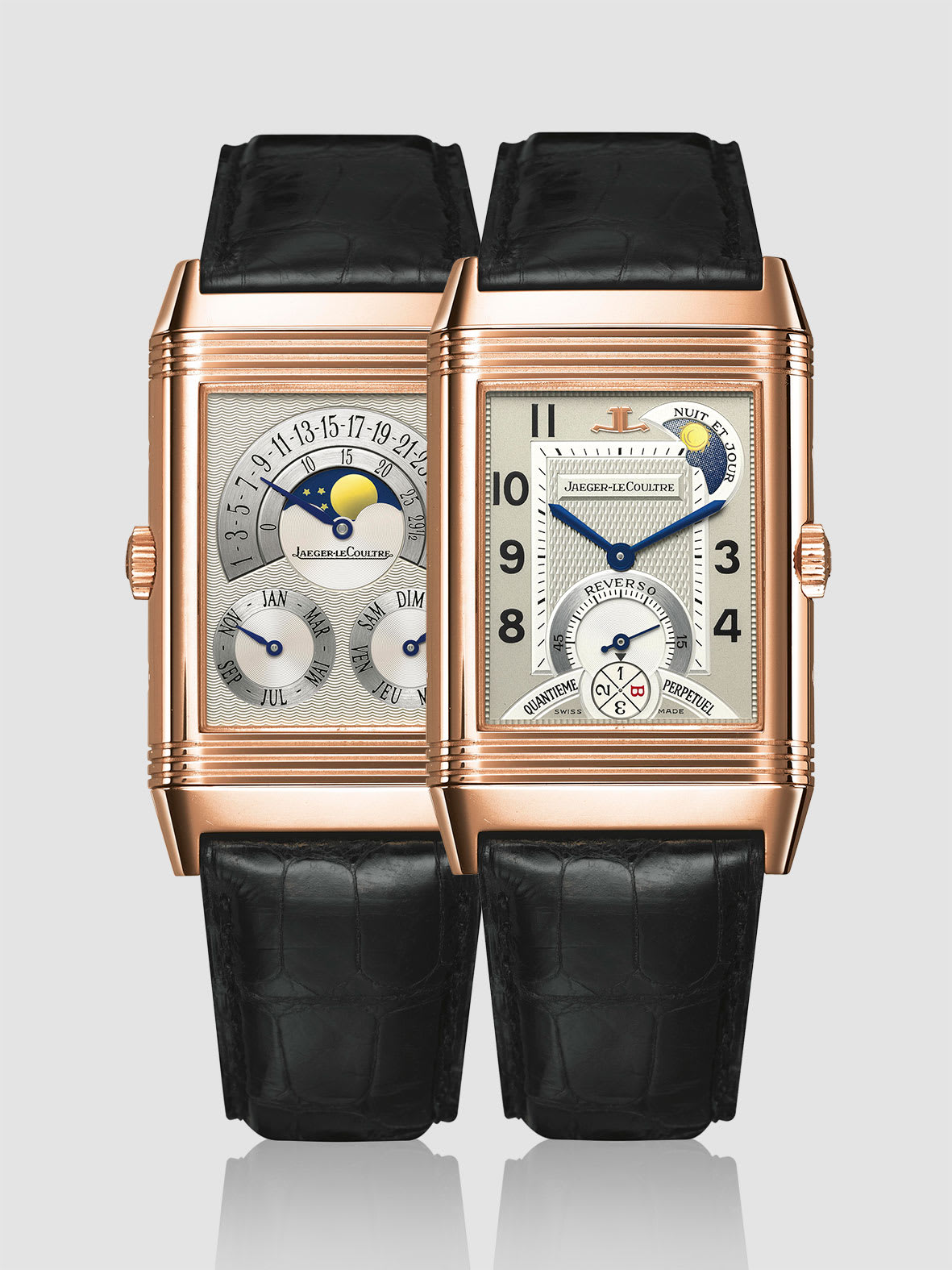
What followed were the Reverso Tourbillon, Reverso Repetition Minutes, Reverso Chronographe Retrograde, Reverso Geographique and Reverso Quantieme Calendrier Perpetuel, with 500 of each example made.
2006: REVERSO GRANDE COMPLICATION A TRIPTYQUE
Some time between a two-faced Reverso and this year’s four-faced one, there was the Grande Complication a Triptyque.
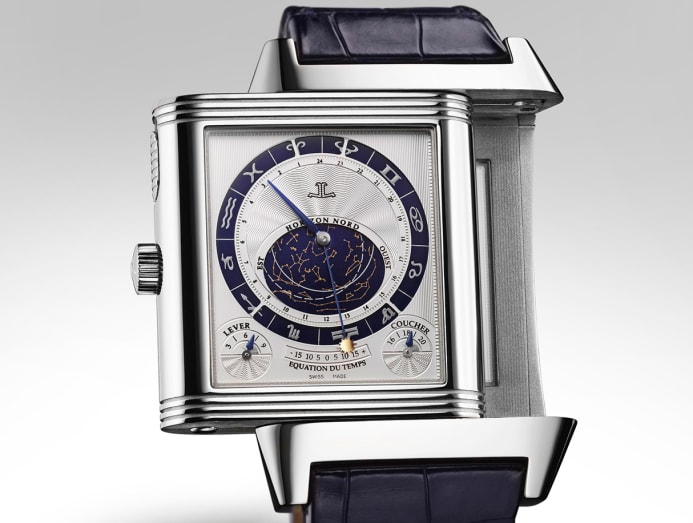
It was released to celebrate the collection’s 75th anniversary and was also stuffed with complications: Tourbillon, sidereal time, sunrise and sunset indicators, equation of time, zodiac calendar and a star chart of either the Northern or Southern Hemispheres.
It used an ingenious mechanism to advance the watch’s many indications – if the watch was closed at midnight, a pin would extend out of the main case movement to trigger a pusher inside the cradle, thus advancing everything at the same time. This very same solution is used in the Quadriptyque.
2008: REVERSO GYROTOURBILLON 2
Jaeger-LeCoultre’s magnificent example of a multi-axis tourbillon first debuted in the Gyrotourbillon 1 in the round Master case back in 2004, and then reappeared in the Gyrotourbillon 2 with an increased movement frequency of 4Hz, as well as a new cylindrical balance spring.
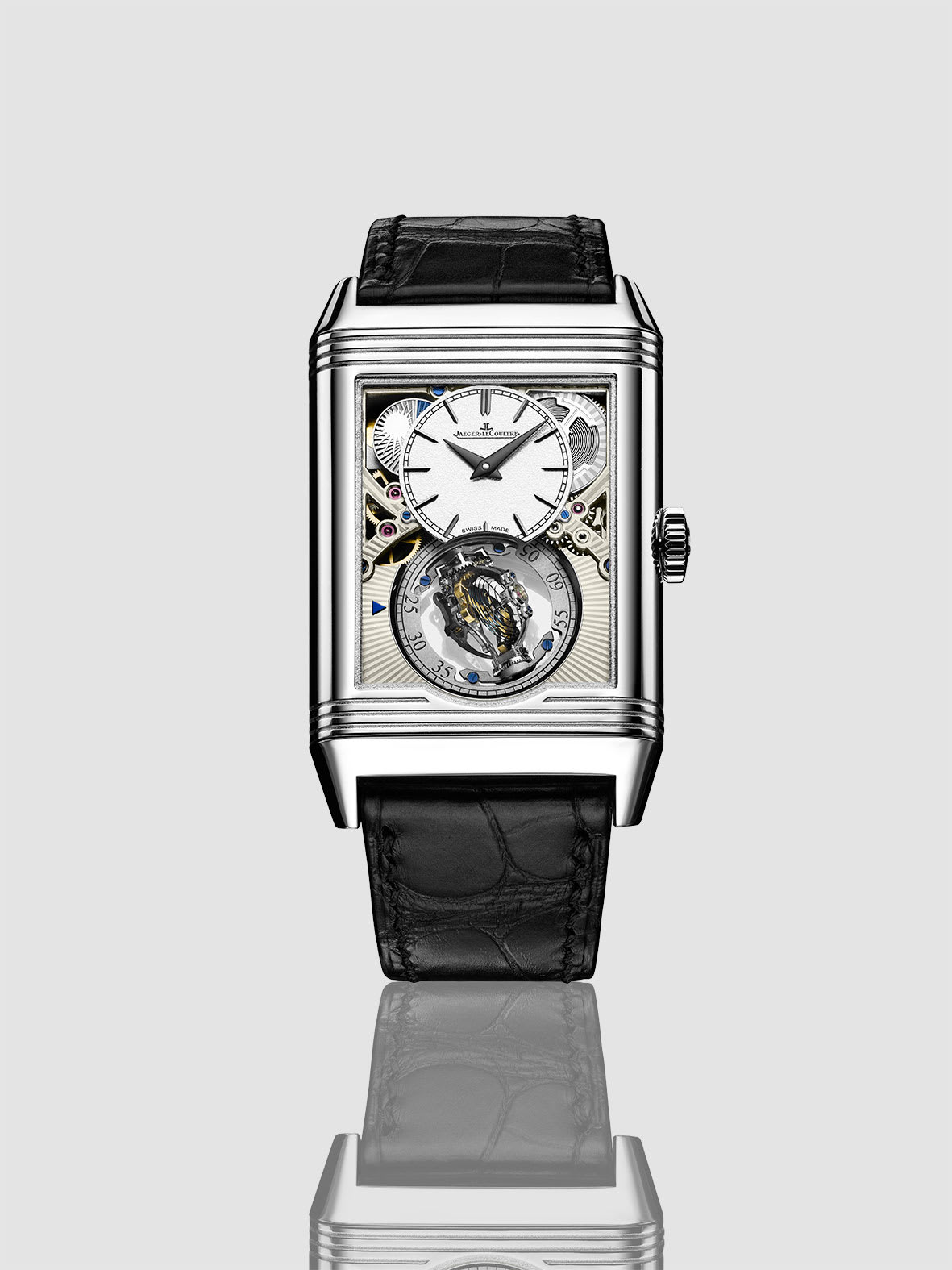
The tourbillon’s outer carriage would complete one rotation within a minute, while the inner carriage takes 18.75 seconds. A slimmed down version of the watch, known as the Reverso Tribute Gyrotourbillon, was introduced in 2016.
2011: REVERSO REPETITION MINUTES A RIDEAU
This isn’t the loudest or thinnest chiming watch out there, but it is one that can only be executed in a Reverso. “Repetition minutes a rideau” roughly translates to “minute repeater via curtain”, and it is this venetian blind-style covering that sets this watch apart.
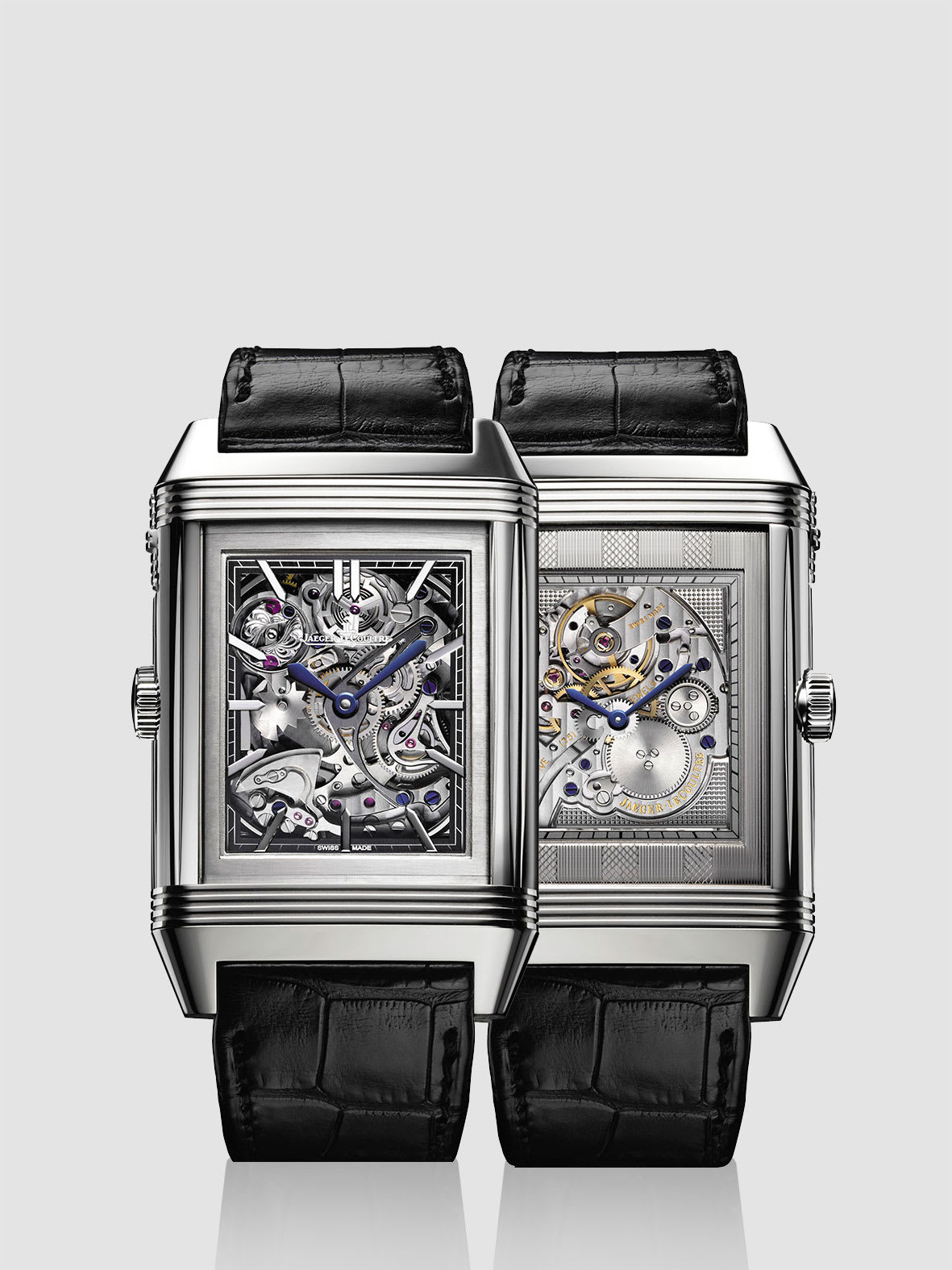
Sliding open the white gold curtain not only reveals the beautiful watch face, but also activates the repeater – a quirky feature meant to recall the curtains opening at an opera.
2020: REVERSO TRIBUTE NONANTIEME
The Quadriptyque wasn’t the only watch created to celebrate this year’s anniversary. While not as mechanically expressive, the Reverso Tribute Nonantieme does have its own charm, and introduces a brand new display to the Reverso family.
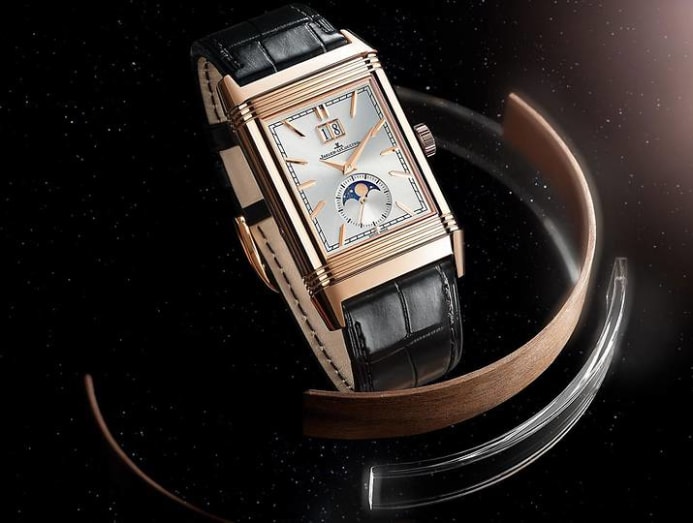
The front has the classic offerings of a big date, moon phase and subsidiary seconds, but the watch’s second dial is a semi-digital jumping hours with minutes on a disc. A day/night indicator is beautifully rendered on a blue lacquer plate decorated with small golden stars, and the entire figure eight-shaped configuration is outlined with gadroons.





